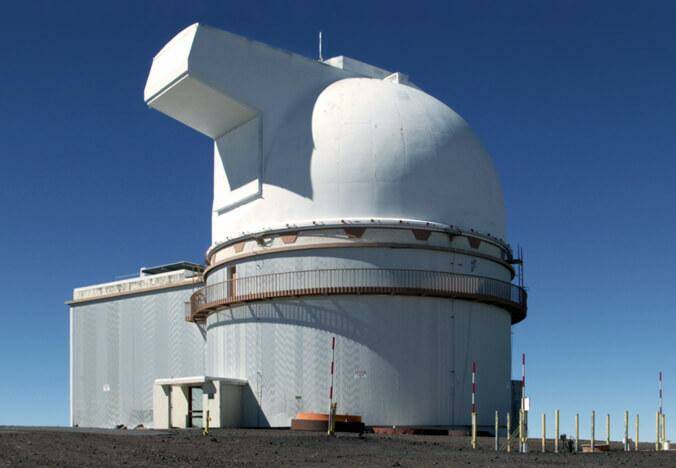The scope and impact of a chemical leak last month at a Maunakea observatory remain unclear, according to University of Hawaii officials.
On Jan. 10, staff at UH’s 88-inch telescope — commonly called UH88 — discovered a pair of leaks in the observatory’s coolant system, which released an unknown amount of ethylene glycol, a chemical used as an antifreeze.
UH representatives on Thursday said they still do not know how much of the substance was released, nor whether any of it was discharged into the environment, saying the answers to such questions are pending a response by the state Department of Health.
Doug Simons, director of UH’s Institute for Astronomy, said the leak was discovered after UH88’s cooling system was shut down in preparation for a winter storm. When staff attempted to restart the system, they discovered a warning notifying them that there was less fluid in the system than previously.
The cooling system has an estimated fluid capacity of about 480 gallons. However, Simons said the entire system has not yet been drained to determine how much fluid is missing, because IFA, which manages and operates UH88, is awaiting DOH guidance for restarting the system.
“It could be quite a small leak,” Simons said. “It could be up to around 200 gallons missing, or it could be more like 20 gallons … but until the system is actually turned on, it’s not clear how much.”
Simons said the fluid is estimated to consist of roughly 70% water and 30% ethylene glycol.
At a Thursday meeting of the newly formed Maunakea Stewardship and Oversight Authority, Greg Chun, director of UH’s Center for Maunakea Stewardship, told Authority board members that one of the leaks had discharged some amount of fluid into a drainpipe that deposits outside the building.
However, an investigation of the pipe found that something was blocking it, so it is still unclear whether any chemicals leaked onto the summit terrain.
“It’s unconfirmed, but we’re going on the assumption that there was a release (outside),” Chun told the board. “Just because we don’t know what’s blocking the drainpipe.”
Chun said about 2 gallons of fluid were collected from the pipe that seemed to have trace amounts of ethylene glycol within them. Samples were sent to DOH and a California lab certified by the Environmental Protection Agency for analysis.
Simons said UH88 is still operational since it does not require the coolant system to be active during the winter. However, he noted that because the observatory floor will not be properly cooled, the image quality of the telescope will be less than optimal.
If it is determined that the spill reached outside the observatory, it would not be the first observatory leak to reach the surrounding environment.
In 2004, between 20 and 30 gallons of propylene glycol, another anti-freezing agent, were spilled from W. M. Keck Observatory, about two-thirds of which were estimated to have escaped the facility.
And in 1996, about 110 gallons of ethylene glycol spilled onto the cinder surrounding the Subaru Observatory after a pallet carrying the fluid’s containers failed. After both spills, the impacted cinder was excavated and disposed of.
Ethylene glycol is toxic to humans and animals when consumed, but it breaks down within about 10 days of exposure to air, and within a few weeks when absorbed into water or soil.
The state of Hawaii requires all ethylene glycol spills of a pound or more be reported; however, the threshold for reporting a spill to the EPA is 5,000 pounds. Chun said reports have been made to both entities regardless.
Email Michael Brestovansky at mbrestovansky@hawaiitribune-herald.com.






